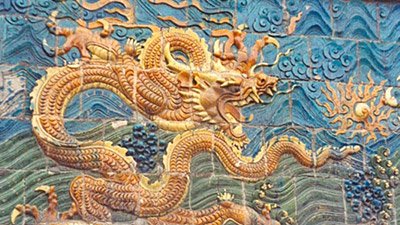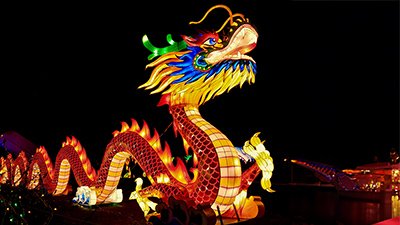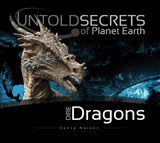
Dragon Legends
Dragons were considered real creatures until relatively recently. They appear in oral stories, art, and literature from cultures around the world and some historians even describe them. Dragons represent the collective, though exaggerated, memory of dinosaurs before that word was invented in 1841 to describe their remains.
Dragons and Man
Many dragon legends such as what we find outside the Bible could be embellished, but the basic characteristics of dragons can be found in known creatures. Biblical creationists are not surprised by artifacts depicting dragons or the worldwide accounts of dragons living among men—that idea is consistent with the Bible.
Dinosaurs and Dragons
Some versions of the Bible include numerous mentions of “dragons” (although other versions use different words), and most cultures have legends of dragon encounters. What’s more, these stories of dragons portray them as creatures quite like dinosaurs.
Dragons Not As Mythical As Once Thought
Creationists are seeing increasing success in convincing the public that dinosaurs did not die out 65 million years ago and were actually contemporaneous with humans. A Popular Science article suggests that dragons are not necessarily mythological but have a biology based in the “real world”.
News About Dragon Legends
-
Jan. 12, 2023 from Ken Ham Blog
Cultures as diverse as the Chinese, Babylonians, Peruvians, Swedes, and North Africans all have ancient legends of dragons. Where did these legends come from?
Articles About Dragon Legends
-
Magazine Department ArticleSlaying the Dragon MythDec. 27, 2010 from Answers Magazine
Creationists are seeing increasing success in convincing the public that dinosaurs did not die out 65 million years ago and were actually contemporaneous with humans.
-
Did Dragons Exist?Aug. 7, 2010
Did dragons ever exist? Or is that idea too ridiculous for “real” science?
-
One Dead Bigfoot, Six Teeth, One Big HoaxAug. 19, 2008
Bigfoot has been found—or so claim two men who say they have found the dead body of a Sasquatch.
-
Magazine ArticleT- rexJune 1, 2002, pp. 56–57
To the chagrin of evolutionary/long-age believers, there is a mass of historical evidence that people and dinosaurs (called ‘dragons’ in ancient times) lived together.
-
-
Magazine ArticleDragons: animals ... not apparitionsJune 1, 2000, pp. 14–16
A most interesting essay by one of the last of the church fathers, titled 'On Dragons and Ghosts', was very recently translated for the first time and published in Moscow.
-
Magazine ArticleSea Monsters . . . More than a Legend?Sept. 1, 1997, pp. 38–42
Reports of unknown monsters of the deep have been a part of sea lore for hundreds of years, but little attention has been paid to such tales until recently.
-
Magazine ArticleNessie’s Kin?Sept. 1, 1996, pp. 18–19
A strange sea creature, said to resemble the Loch Ness Monster, has been reported off the coast of Cornwall in south-west England according to London’s Daily Mail.
-
Magazine ArticleBunyips and DinosaursMarch 1, 1993, pp. 51–52
Australian Aborigines have long spoken of a frightening legendary creature they call a bunyip.
Recommended Resources

Answers in Genesis is an apologetics ministry, dedicated to helping Christians defend their faith and proclaim the good news of Jesus Christ.
- Customer Service 800.778.3390
- Available Monday–Friday | 9 AM–5 PM ET
- © 2025 Answers in Genesis





